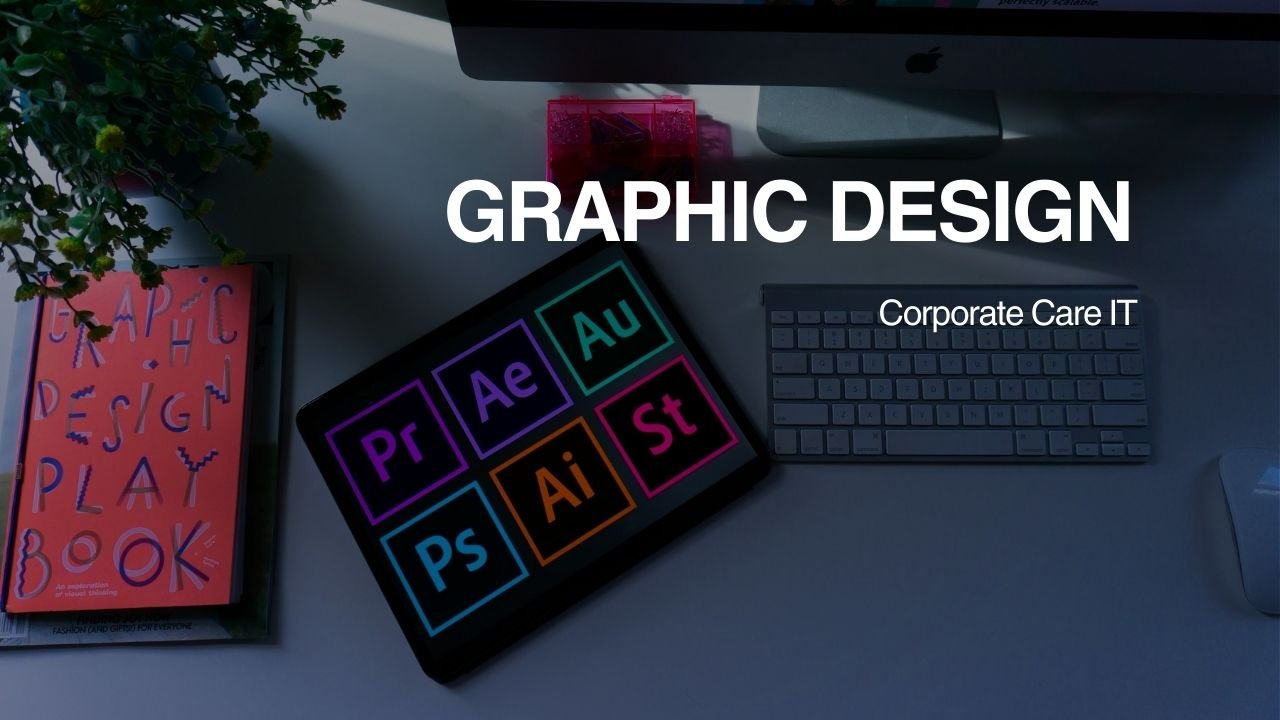What is Graphic Design?
The art of graphic design involves using layout, images, color, and typography to communicate. To make it simple for readers to read and enjoy various digital and print content, graphic designers create authentic narratives with visuals.
Traditionally, we have assumed that graphic design is a purely creative endeavor involving artists and doodle artists. Graphic design plays a significant role in creativity, but strategic business thinking is just as important because it is essential to creating marketing messages for companies.
A person who understands and practices the art of graphic design created a great deal of the modern environment, including the movie posters you pass by, the mail in your mailbox, the websites you visit, and the emails you receive. Graphic design serves as a gateway for new customers, viewers, and— most importantly— more money for the businesses that commission these design projects.
Why is Graphic design important today?
We process images and visuals much more quickly than we process text alone, which is one of the most compelling arguments for why graphic design is so important. Research has even indicated that it is roughly 60,000 times faster! Humans are also wired to process visual information when it comes to how information is transmitted to the brain. Visual information makes up 90% of the information that reaches the brain.
Graphic design is important today for several reasons:
- Effective Communication: In a visually-oriented world, graphic design helps in communicating messages, ideas, and information effectively. With the abundance of information available, well-designed graphics help capture attention, simplify complex concepts, and convey messages clearly.
- Branding and Identity: Graphic design plays a crucial role in creating and maintaining a brand’s identity. Logos, color schemes, typography, and overall visual style are all designed to represent a brand and differentiate it from competitors. Consistent and visually appealing branding builds trust, recognition, and loyalty among consumers.
- Marketing and Advertising: Graphic design is a powerful tool for marketing and advertising campaigns. Eye-catching designs help attract attention and engage the audience, whether it’s through digital ads, billboards, packaging, or social media graphics. Well-designed visuals have the potential to evoke emotions, influence purchasing decisions, and create a memorable brand experience.
- User Experience (UX) and User Interface (UI) Design: In the digital realm, graphic design is crucial for creating intuitive and visually appealing user interfaces (UI). Good UI design enhances user experience (UX) by making digital products and websites easy to navigate, visually appealing, and engaging. Clear typography, appropriate use of color, and well-structured layouts contribute to a positive user experience.
- Information Visualization: Graphic design is instrumental in presenting complex data and information in a visually understandable and appealing manner. Infographics, charts, and diagrams help simplify data, making it more accessible and memorable for the audience. Visual representations can aid in storytelling, education, and decision-making processes.
- Cultural and Social Impact: Graphic design has the power to shape and reflect cultural and social attitudes. It can challenge norms, convey social messages, and raise awareness about important issues. Designers often engage in projects related to social causes, sustainability, and inclusivity, using their skills to promote positive change in society.
You can’t imagine running a prosperous online business as an entrepreneur without considering digital marketing. Every company or marketer now has a strong need for digital marketing. Additionally, graphic design serves as a catalyst for your business’s marketing efforts to connect with consumers and grab their interest.
What Tools Do Graphic Designers Use?
There are numerous graphic design tools available, both for beginners and professionals, that cater to different design needs. Here are some popular graphic design tools:
- Adobe Creative Cloud: Adobe offers a suite of industry-standard design software, including Photoshop (for image editing and manipulation), Illustrator (for vector graphics), InDesign (for page layout and publishing), and more. These tools are widely used by professionals in various design disciplines.
- Canva: Canva is a user-friendly online design platform that provides a wide range of pre-made templates and design elements. It allows users to create social media graphics, presentations, posters, and more, using a drag-and-drop interface.
- Sketch: Sketch is a popular vector-based design tool primarily used for user interface (UI) and user experience (UX) design. It offers a range of features specifically tailored for digital design, including symbol libraries, prototyping tools, and plugin support.
- Figma: Figma is a collaborative web-based design tool that enables real-time collaboration and sharing of design files. It is particularly useful for team-based design projects and offers features for UI design, prototyping, and design system management.
- Affinity Designer: Affinity Designer is a powerful vector-based design software that provides a comprehensive set of tools for illustration, typography, and graphic design. It is known for its smooth performance, affordability, and cross-platform compatibility.
- Procreate: Procreate is a popular digital painting and illustration app designed specifically for iPad users. It offers a wide range of brushes, layering capabilities, and advanced drawing tools, making it a favorite among digital artists and illustrators.
- Gravit Designer: Gravit Designer is a free, browser-based design tool that offers features similar to professional design software. It supports vector graphics, offers a range of design tools, and allows for exporting designs in various file formats.
- Inkscape: Inkscape is a free and open-source vector graphics editor that provides many of the features found in commercial design software. It is suitable for creating illustrations, logos, icons, and other scalable graphics.
These are just a few illustrations of the market’s graphic design tools. The tool selection is based on the designer’s unique needs, budget, level of expertise, and personal preferences.


